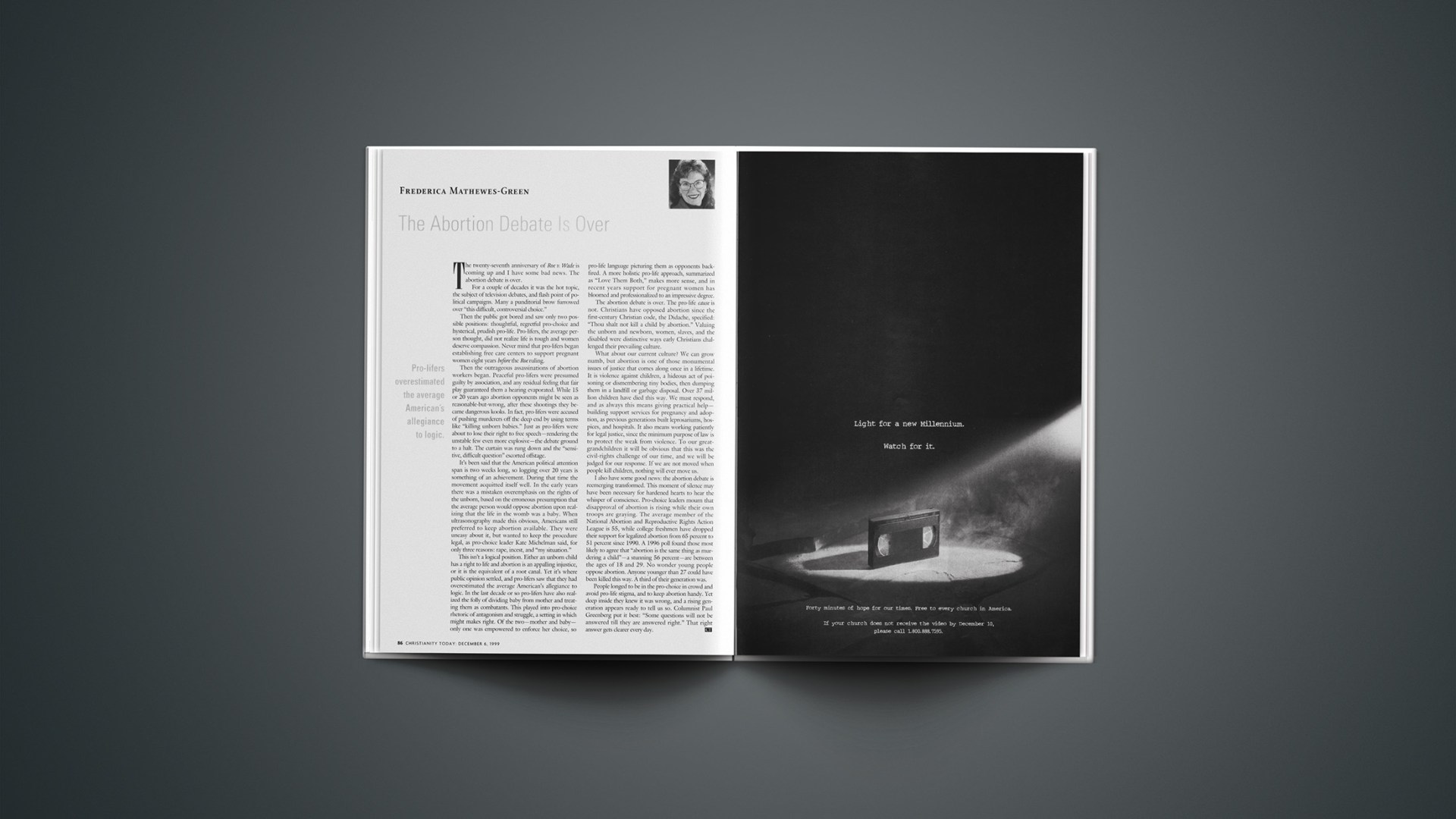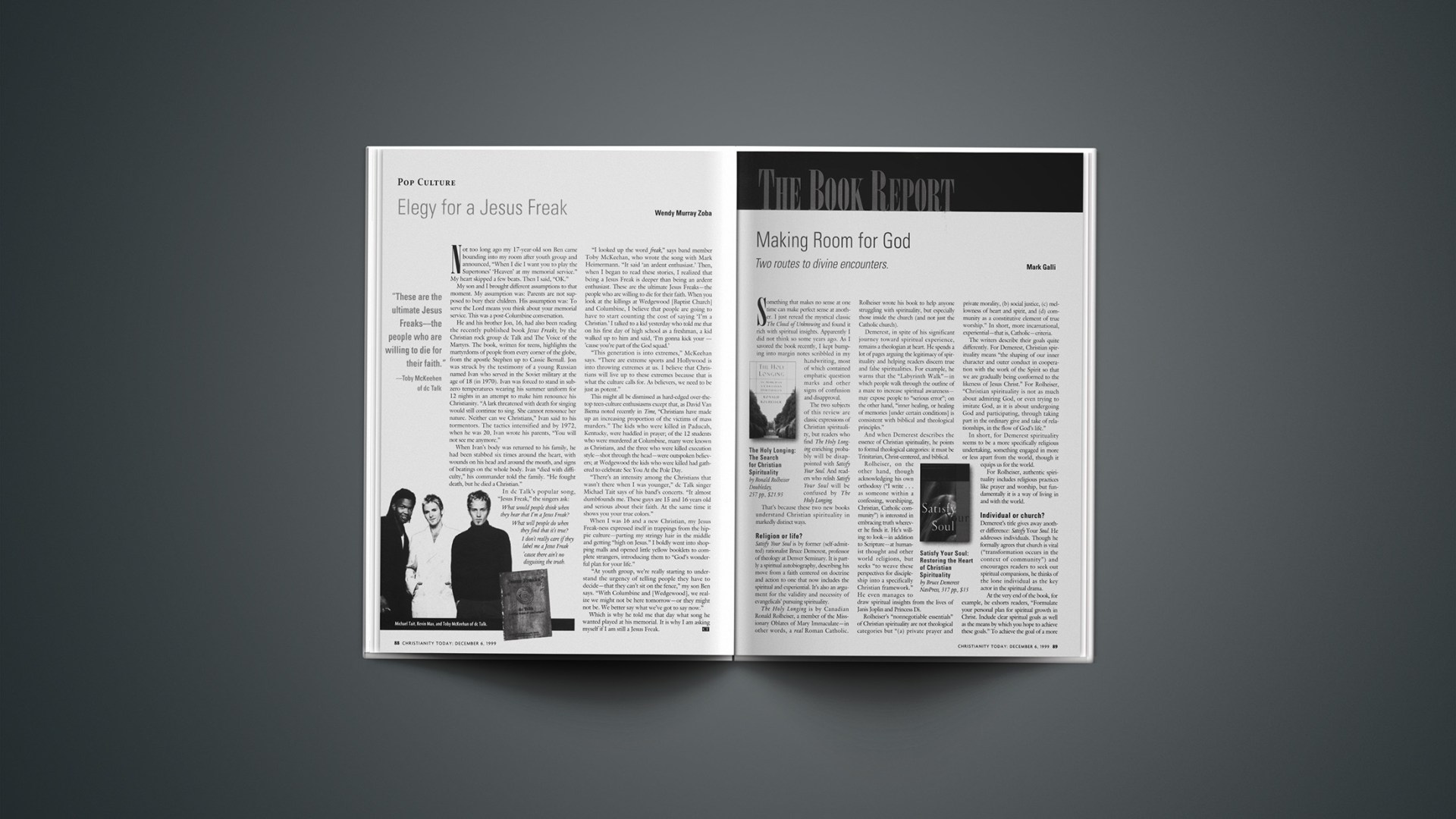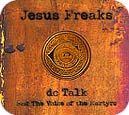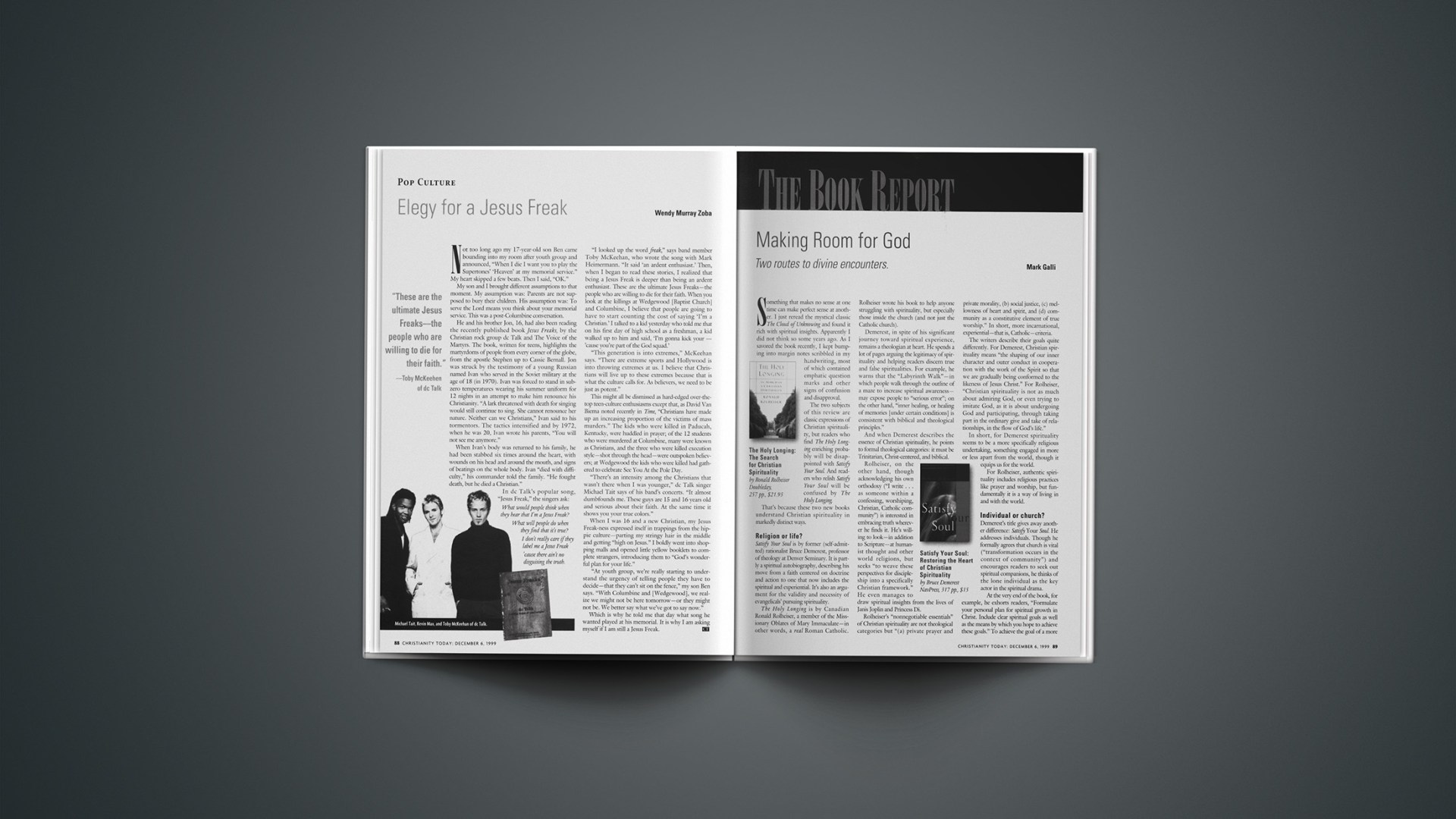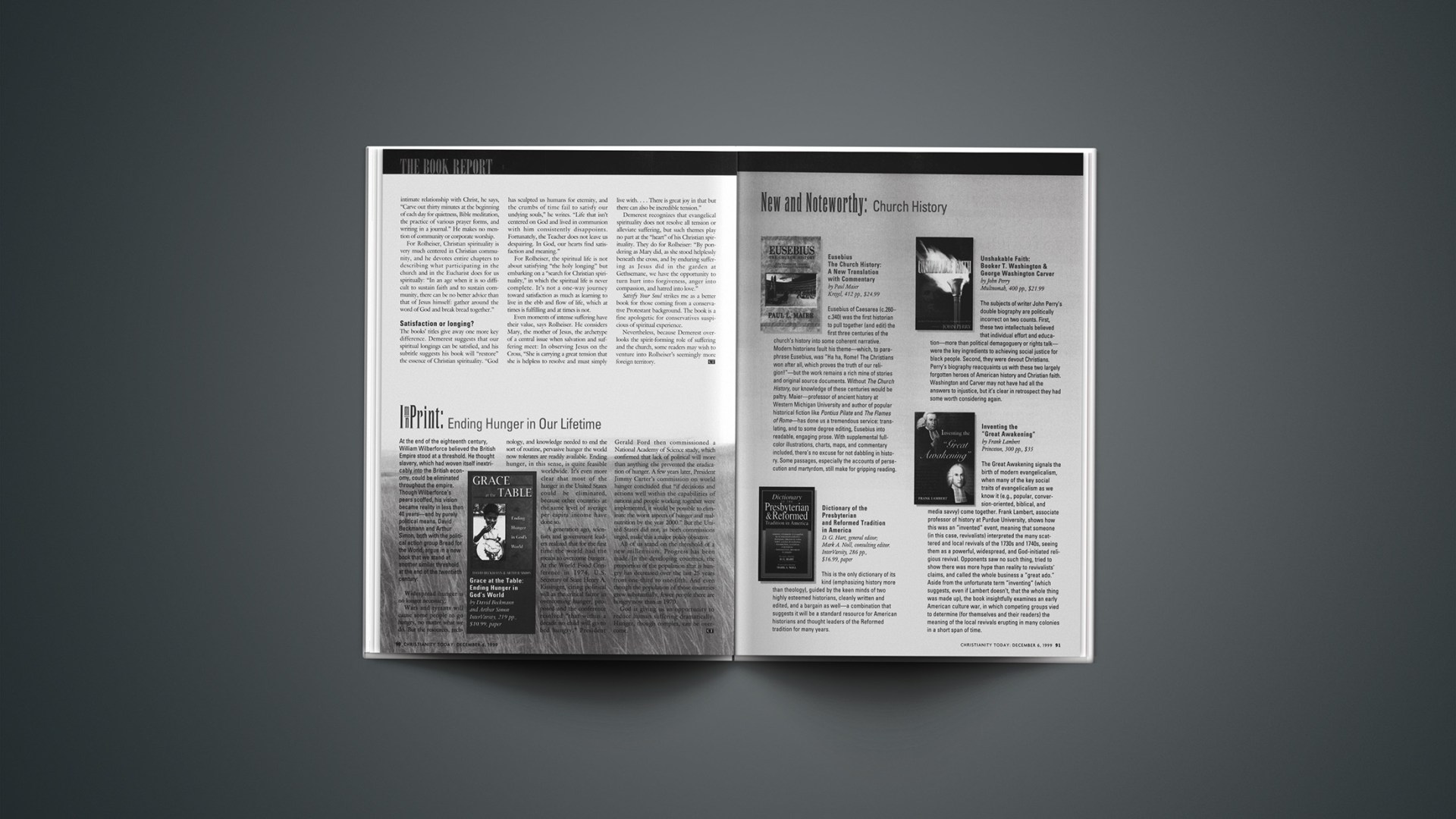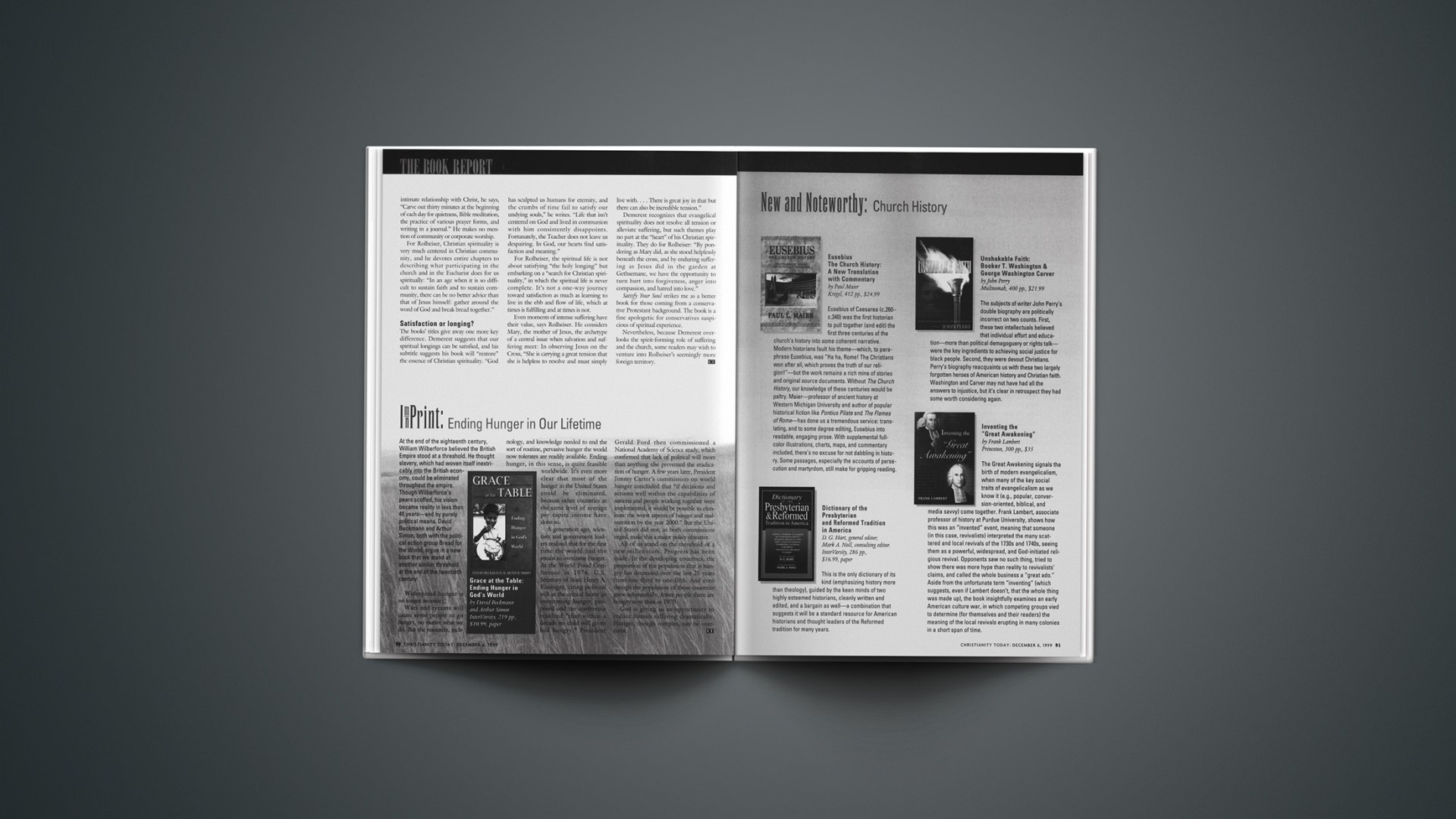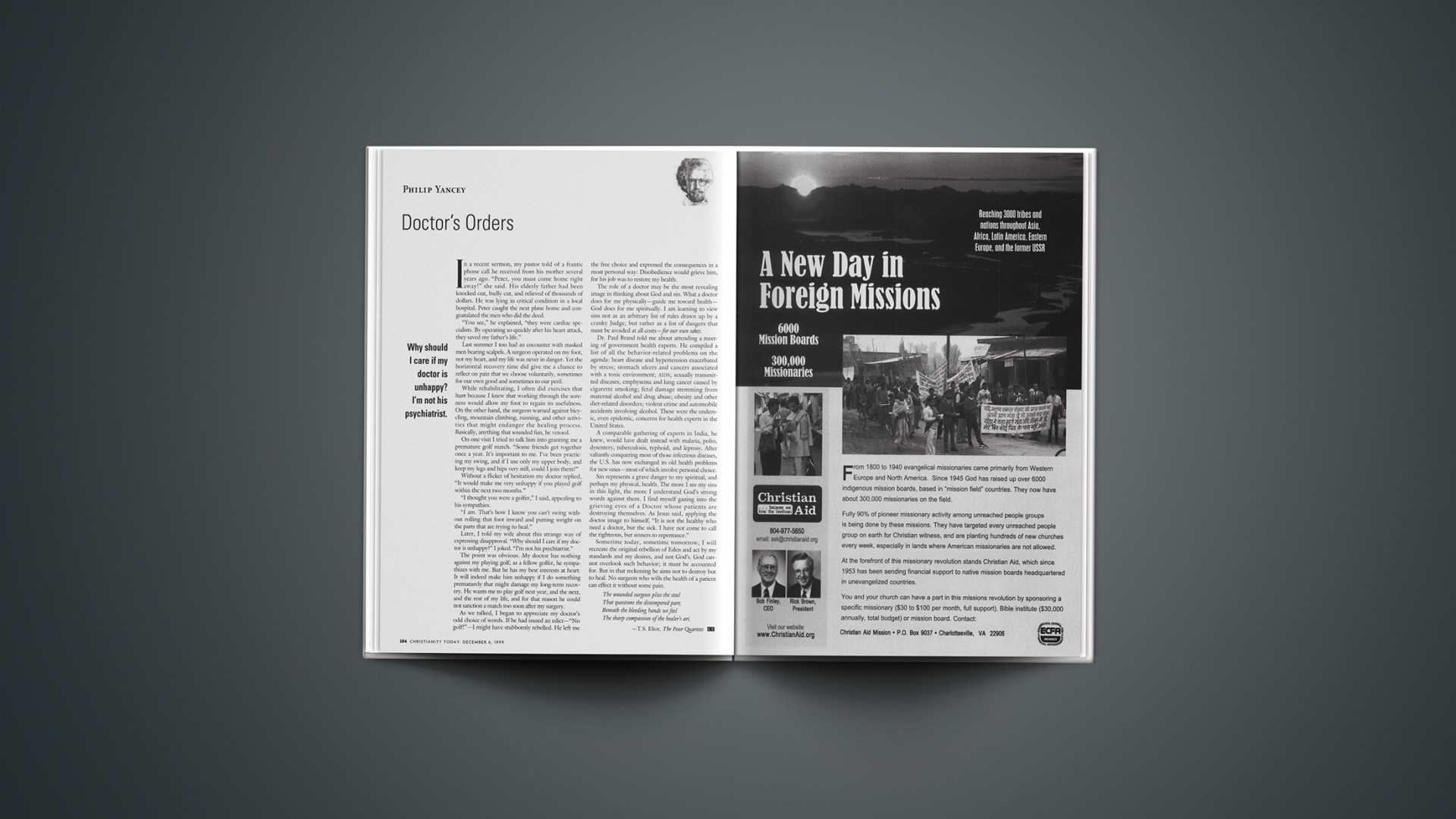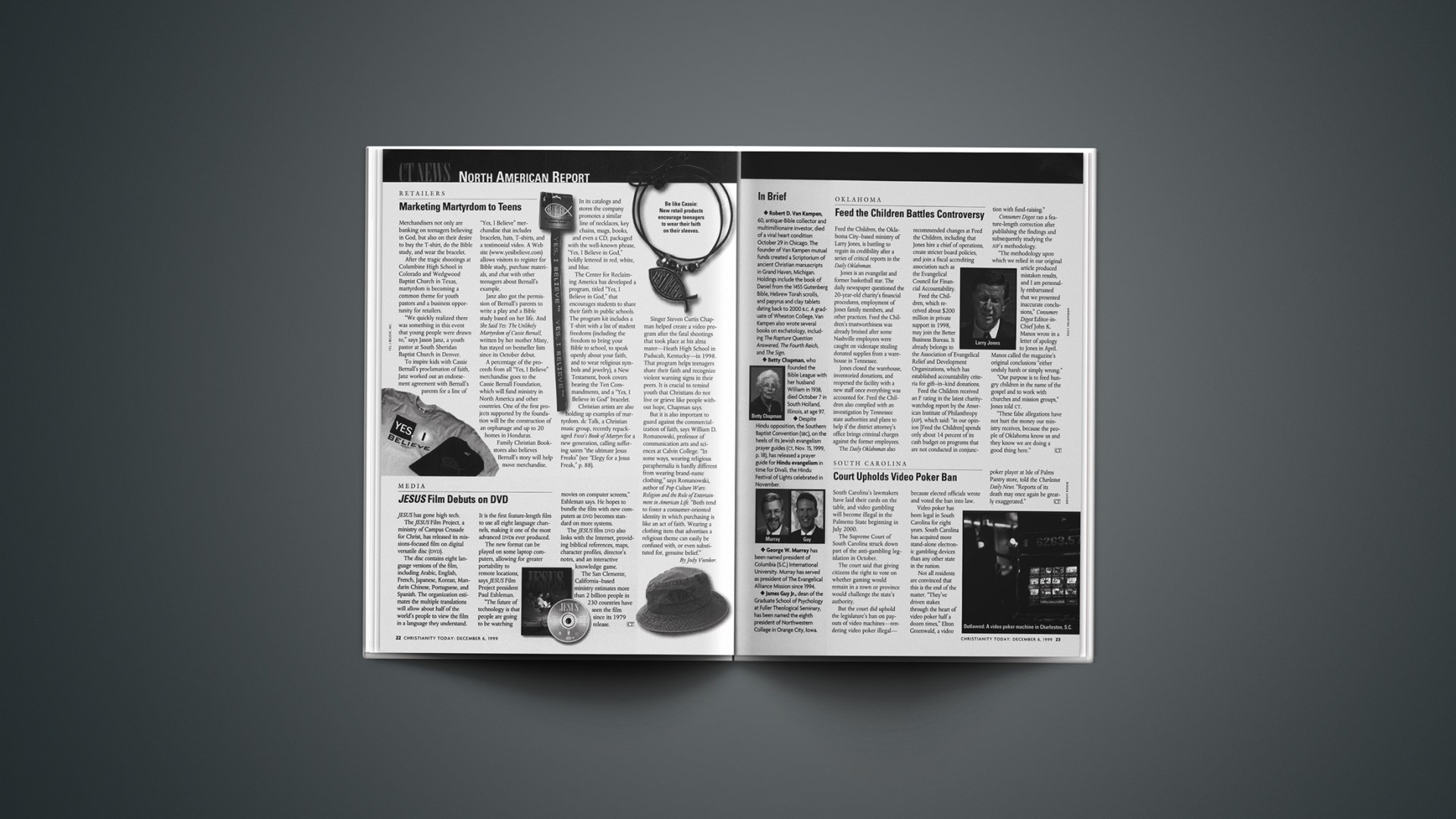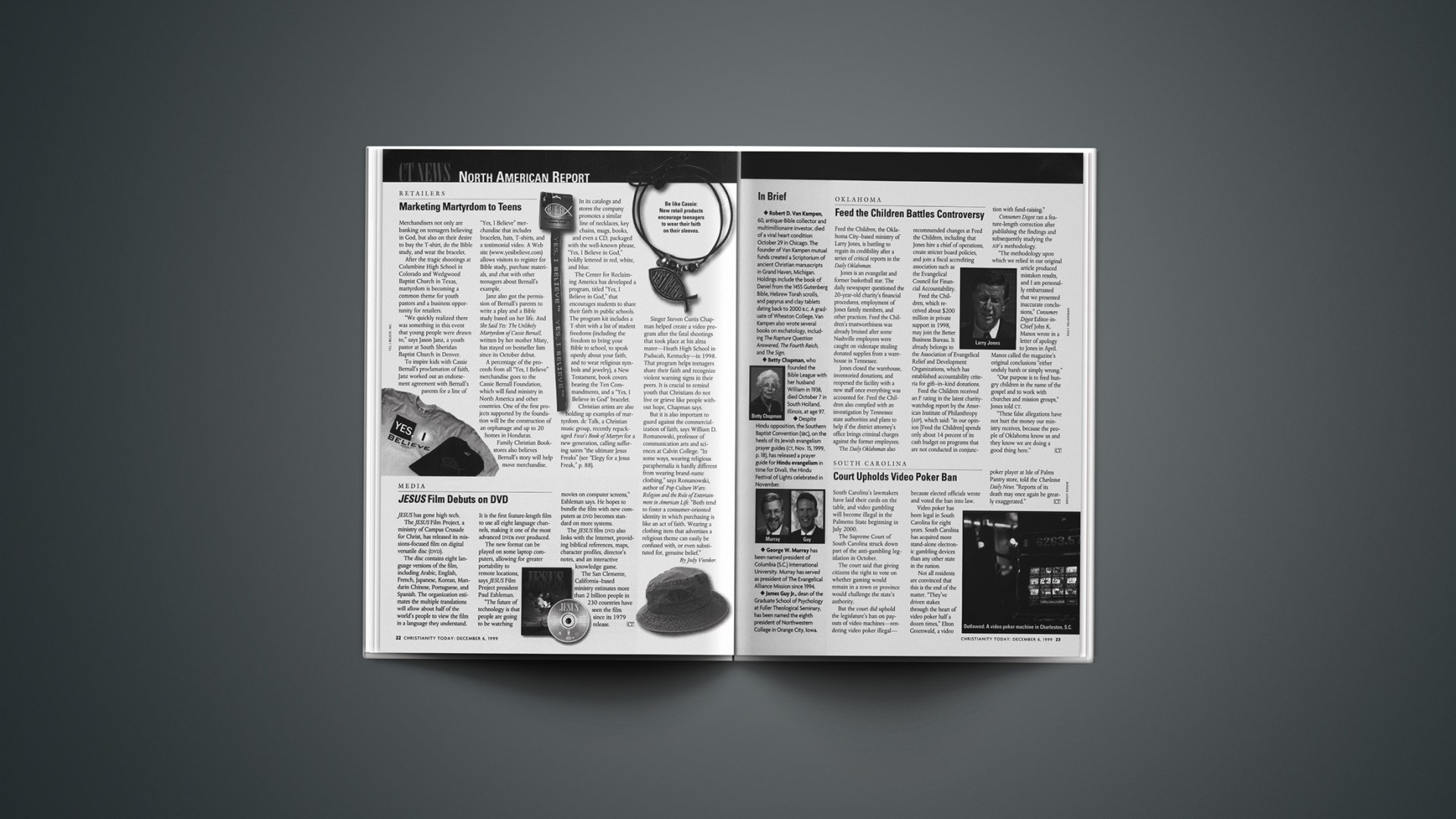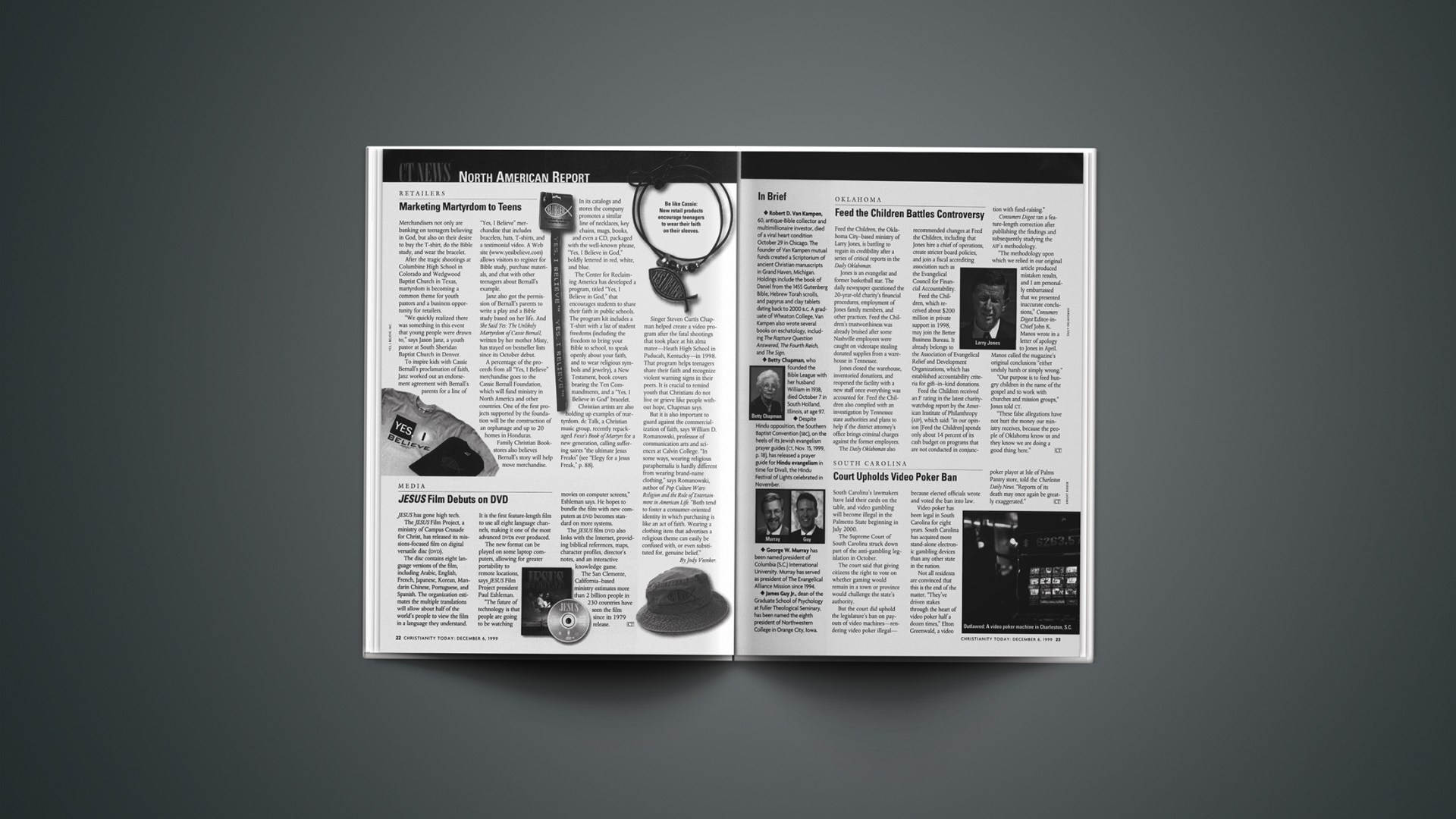The twenty-seventh anniversary of Roe v. Wade is coming up and I have some bad news. The abortion debate is over. For a couple of decades it was the hot topic, the subject of television debates, and flash point of political campaigns. Many a punditorial brow furrowed over "this difficult, controversial choice."
Then the public got bored and saw only two possible positions: thoughtful, regretful pro-choice and hysterical, prudish pro-life. Pro-lifers, the average person thought, did not realize life is tough and women deserve compassion. Never mind that pro-lifers began establishing free care centers to support pregnant women eight years before the Roe ruling.
Then the outrageous assassinations of abortion workers began. Peaceful pro-lifers were presumed guilty by association, and any residual feeling that fair play guaranteed them a hearing evaporated. While 15 or 20 years ago abortion opponents might be seen as reasonable-but-wrong, after these shootings they be came dangerous kooks. In fact, pro-lifers were accused of pushing murderers off the deep end by using terms like "killing unborn babies." Just as pro-lifers were about to lose their right to free speech—rendering the unstable few even more explosive—the debate ground to a halt. The curtain was rung down and the "sensitive, difficult question" escorted offstage.
It's been said that the American political attention span is two weeks long, so logging over 20 years is some thing of an achievement. During that time the movement acquitted itself well. In the early years there was a mistaken overemphasis on the rights of the unborn, based on the erroneous presumption that the average person would oppose abortion upon realizing that the life in the womb was a baby. When ultrasonography made this obvious, Americans still preferred to keep abortion available. They were uneasy about it, but wanted to keep the procedure legal, as pro-choice leader Kate Michel man said, for only three reasons: rape, incest, and "my situation."
This isn't a logical position. Either an unborn child has a right to life and abortion is an appalling injustice, or it is the equivalent of a root canal. Yet it's where public opinion settled, and pro-lifers saw that they had overestimated the average American's allegiance to logic. In the last decade or so pro-lifers have also realized the folly of dividing baby from mother and treating them as combatants. This played into pro-choice rhetoric of antagonism and struggle, a setting in which might makes right. Of the two—mother and baby—only one was empowered to enforce her choice, so pro-life language picturing them as opponents backfired. A more holistic pro-life approach, summarized as "Love Them Both," makes more sense, and in recent years support for pregnant women has bloomed and professionalized to an impressive degree.
The abortion debate is over. The pro-life cause is not. Christians have opposed abortion since the first-century Christian code, the Didache, specified: "Thou shalt not kill a child by abortion." Valuing the unborn and newborn, women, slaves, and the disabled were distinctive ways early Christians challenged their prevailing culture.
What about our current culture? We can grow numb, but abortion is one of those monumental issues of justice that comes along once in a lifetime. It is violence against children, a hideous act of poisoning or dismembering tiny bodies, then dumping them in a landfill or garbage disposal. Over 37 million children have died this way. We must respond, and as always this means giving practical help—building support services for pregnancy and adoption, as previous generations built leprosariums, hospices, and hospitals. It also means working patiently for legal justice, since the minimum purpose of law is to protect the weak from violence. To our great-grandchildren it will be obvious that this was the civil-rights challenge of our time, and we will be judged for our response. If we are not moved when people kill children, nothing will ever move us.
I also have some good news: the abortion debate is reemerging transformed. This moment of silence may have been necessary for hardened hearts to hear the whisper of conscience. Pro-choice leaders mourn that disapproval of abortion is rising while their own troops are graying. The average member of the National Abortion and Reproductive Rights Action League is 55, while college freshmen have dropped their support for legalized abortion from 65 percent to 51 percent since 1990. A 1996 poll found those most likely to agree that "abortion is the same thing as murdering a child"—a stunning 56 percent—are between the ages of 18 and 29. No wonder young people oppose abortion. Anyone younger than 27 could have been killed this way. A third of their generation was.
People longed to be in the pro-choice in crowd and avoid pro-life stigma, and to keep abortion handy. Yet deep inside they knew it was wrong, and a rising generation appears ready to tell us so. Columnist Paul Greenberg put it best: "Some questions will not be answered till they are answered right." That right answer gets clearer every day.
Copyright © 1999 Christianity Today. Click for reprint information.

